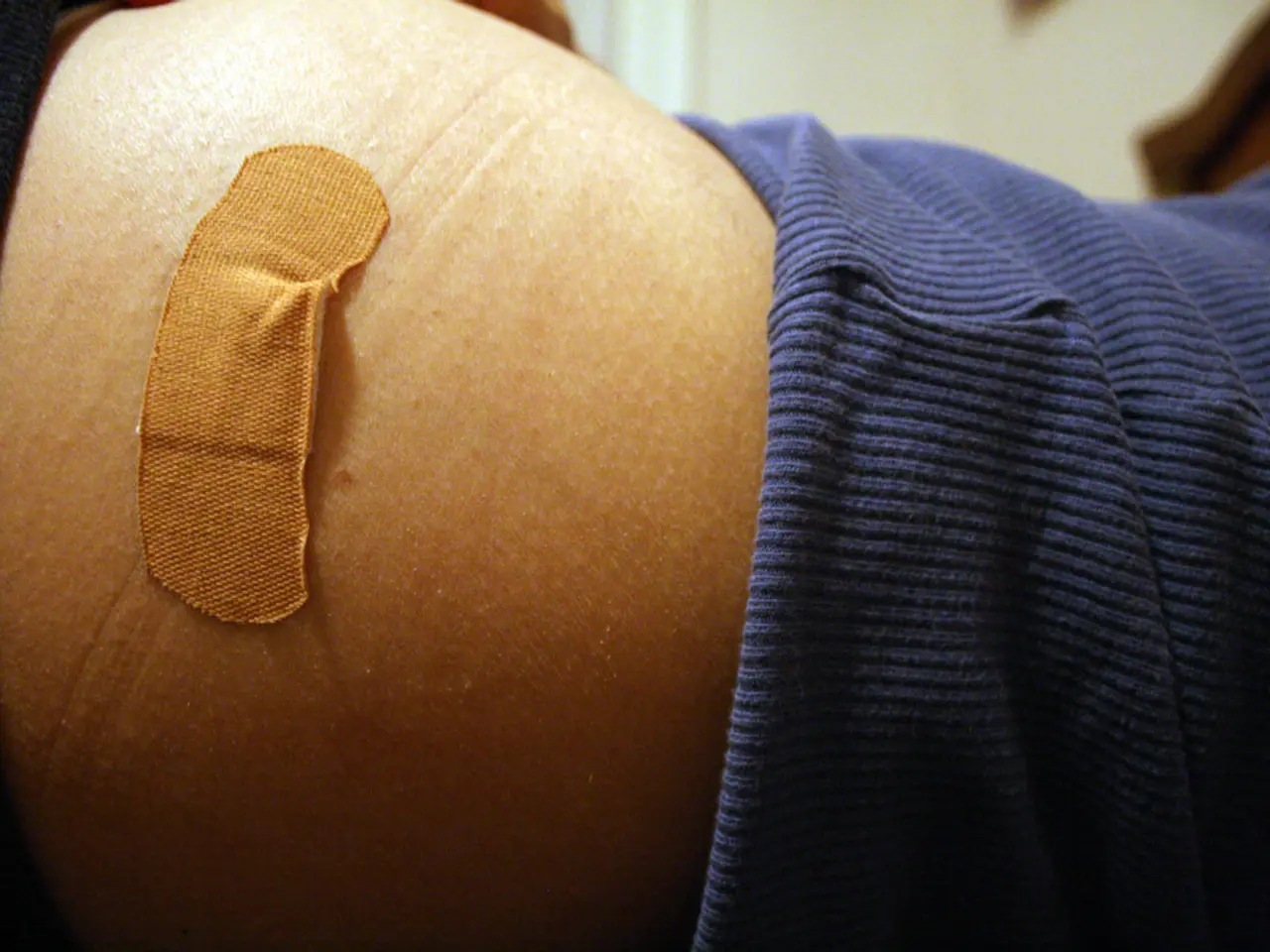Visual Appearance of HPV and Associated Symptoms, along with Recommended Actions
HPV, or Human Papillomavirus, is a common group of viruses that can be sexually transmitted. One of the most significant concerns associated with HPV is the development of genital warts, a hallmark visible feature of the virus in both males and females.
The Visible Signs of HPV
Genital warts, the most recognizable symptom of an HPV infection, can appear as small, flesh-colored or red lumps that may be raised, flat, or clustered. They often have a cauliflower-like texture or appearance and can vary in size and shape, sometimes appearing as small, rough lumps either alone or in clusters. These warts may feel soft or firm and can be painless, but they may cause itching, tenderness, discomfort, or occasional bleeding.
In males, genital warts commonly appear on the penis, scrotum, anus, urethra, and thighs and groin area. In females, they often appear on the vulva, vagina, cervix, anus, and urethra. Women may also notice changes such as altered vaginal discharge or abnormal bleeding not related to their menstrual cycle, especially if warts are near the urethra.
Preventing HPV
Avoiding douches may reduce the risk of contracting an STI, as the vagina is self-cleaning and douching may remove some beneficial bacteria. The most effective way to reduce the risk of HPV is by getting vaccinated. The HPV vaccine is available in the U.S. for anyone aged 9-45, including males and females.
To prevent HPV and other STIs, always use condoms or dental dams during vaginal, oral, or anal sex. HPV is contracted through skin-to-skin contact during these activities with people who have the virus.
Diagnosis and Treatment
In females, a HPV test is part of a cervical cancer screening or Pap test. The test involves a healthcare provider using a speculum to view the cervix and collecting cells from the cervix for lab testing. While there is no routine HPV test for males, doctors may provide anal Pap testing for those at increased risk for HPV-related anal cancer.
There is no cure for HPV, but treatments are available to help manage genital warts until the infection goes away. Treatments include medications, cryotherapy, surgical removal, electrocautery, laser treatment, and monitoring for complications.
Important Considerations
Many HPV infections are asymptomatic, meaning no visible signs or warts develop, even though the virus can still be transmitted unknowingly. Rarely, warts can develop in the respiratory tract, affecting breathing, but this is less common and not distinguished by typical genital wart appearance.
It's essential to note that high-risk forms of HPV can lead to cancer and often do not cause visible symptoms. If a person thinks they may have genital warts, they should see a doctor or sexual health nurse for an accurate diagnosis and to monitor for complications.
[1]: [Source 1] [2]: [Source 2] [3]: [Source 3] [4]: [Source 4] [5]: [Source 5]
- HPV, or Human Papillomavirus, is associated with the development of psoriatic warts, a type of skin condition marked by the growth of rough, red, and scaly patches.
- Skin-care regimens should take into account potential HPV infections, as the virus has been found to have a role in certain types of skin cancers, such as multiple squamous cell carcinomas.
- There is growing evidence that HPV may play a role in the onset and progression of Sclerosis Multiplex, a debilitating neurological disorder affecting the nervous system. [Source 1]
- The AQ (Adaptive Quotient) test, used to measure mental health, may be affected in individuals with long-term genital warts due to the psychological impact of their condition on sexual health and overall well-being. [Source 2]
- In women's health, an increasing number of studies explore the connection between HPV and the risk of developing Womens-Health-and-Wellness issues such as menstrual disorders and preterm labor. [Source 3]
- Research suggests that certain autoimmune diseases like Rheumatoid Arthritis and Multiple Sclerosis may share similarities with the onset and progression of HPV, providing new insights for predictive science and potential treatment developments. [Source 4]
- The impact of HPV on sexual health is not only physical but also emotional, as it can lead to feelings of embarrassment, anxiety, and significant strain in relationships. [Source 5]
- Controlling HPV must be a priority in the general health-and-wellness agenda for both men and women, as it can have far-reaching effects on mental, sexual, and overall health.




